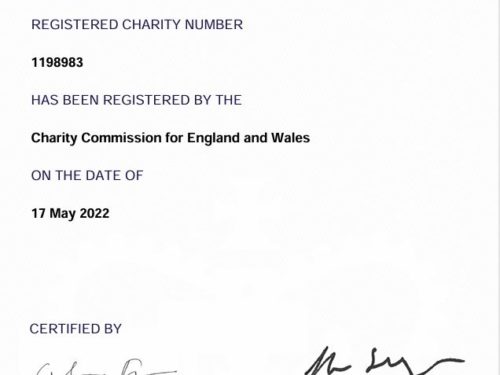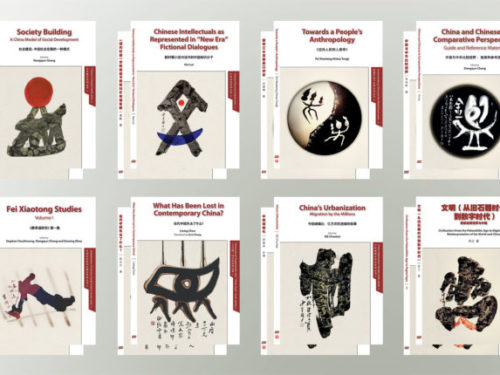

Introduction
In mid to late March, Professor Carsten Herrmann-Pillath from Germany visited Shenzhen, China. He represented the University of Erfurt in signing a carbon neutrality strategic agreement with a Chinese university, research institution, and enterprises. He also visited Jintian Elementary School to observe its green and low-carbon practices and participated in the international symposium ‘Nature-based Solutions (NbS 2.0)’ hosted by the China (Shenzhen) Comprehensive Development Institute.
Timeline
In recent years, green sustainable development has become a global focus. From integrating carbon emission standards and addressing international carbon barriers to corporate ESG and product carbon footprints, these factors influence national strategies for carbon neutrality and peak carbon emissions. To deepen international cooperation and build an integrated ecosystem of industry, academia, and research, the Zero Carbon Industry Operations Center (Shenzhen) Co., Ltd., CNOOC, the University of Erfurt in Germany, Harbin Institute of Technology, and the China Development Institute (Shenzhen) have reached a strategic partnership. Professor Carsten Herrmann-Pillath from the University of Erfurt signed the cooperation agreement, aiming to enhance green and low-carbon industrial development through Sino-European standards and technological innovation cooperation.
On the 18th March, Professor Herrmann-Pillath, accompanied by Director Liu Yu and professors from Harbin Institute of Technology, visited the near-zero carbon campus project at Jintian Elementary School. This project, provided by the Zero Carbon Industry Operations Center, includes design, implementation, platform development, and a dual-carbon education system, making it a ‘Shenzhen City Green and Low-Carbon Scene Demonstration Base.’ Experts were impressed with Jintian Elementary School’s low-carbon practices, recognizing its globally exemplary model of integrating production and education.
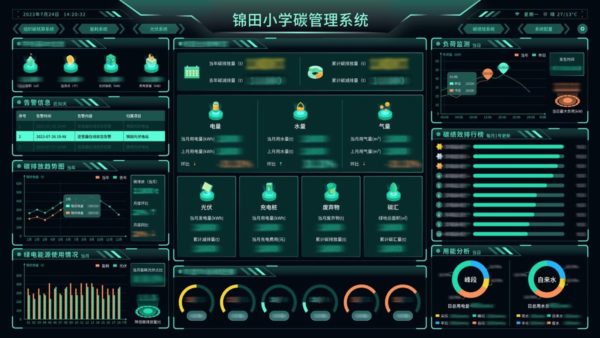
Professor Herrmann-Pillath was deeply impressed by Jintian Elementary School’s low-carbon practices. Not only has the school upgraded its hardware to be more environmentally friendly and established a carbon emission management system, but it has also introduced dual-carbon education to the students, which aligns with the core essence of education. From practical demonstrations to theoretical knowledge cultivation and subtle influence in daily life, this integration of industry and education forms a collaborative community for green sustainable development. This advanced and exemplary approach has global significance.
After the visit, experts learned about the achievements of the Zero Carbon Industry Operations Center in assisting enterprises with green low-carbon transitions. The center’s ‘Zero Tan Cloud’ platform, focused on carbon calculation, management, reduction, and elimination, has developed one-stop service capabilities and participated in setting various standards.
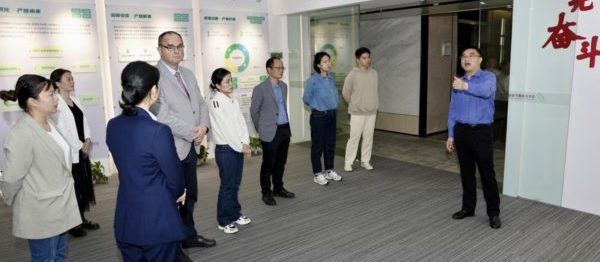
In 2022, the Zero Carbon Industry Operations Center and the Longhua District Government established Shenzhen’s first dual-carbon industry public service platform. Professor Herrmann-Pillath praised this innovative and advanced model, expressing his pleasure in becoming the first international expert in the dual-carbon expert pool.

Experts also discussed ESG, EU carbon tariffs, and Amazon Climate Pledge certifications, planning to conduct broader and deeper cooperation from a global perspective in the future.
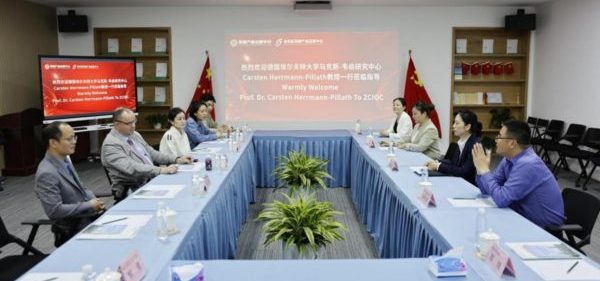
On the 19th March, 2024, the China (Shenzhen) Comprehensive Development Institute hosted an international symposium titled ‘Nature-based Solutions (NbS 2.0).’ Professor Carsten Herrmann-Pillath from the Max Weber Centre for Advanced Cultural and Social Studies at the University of Erfurt in Germany delivered the keynote speech on ‘Nature-based Solutions 2.0: Designing Biodiverse Cities.’ Experts and scholars from Tencent, the Shenzhen Municipal Policy Research Office, the Shenzhen Municipal Bureau of Ecology and Environment, Shenzhen University, and other institutions participated in the seminar to share new theories and practices in urban ecological civilization construction.
Nature-based Solutions (NbS) involve actions that protect, sustainably manage, and restore ecosystems to address societal, economic, and environmental challenges. Since being proposed by the World Bank in 2008, NbS has been increasingly applied to climate change, disaster risk reduction, food security, water security, ecosystem degradation, and biodiversity loss. In the context of building a Beautiful China, a significant theoretical and practical issue is how the cities in the Guangdong-Hong Kong-Macao Greater Bay Area can develop a new relationship between humans, nature, and society, promoting the coordinated development of ecology, society, economy, and culture.
Professor Herrmann-Pillath pointed out that NbS is an effective solution to climate change challenges, with biodiversity being the key. Cities play a crucial role in addressing biodiversity loss, despite emitting over 75% of global CO2. Designing biodiverse cities is essential, as emphasized in a recent World Economic Forum report, which suggests that cities should become places where nature thrives. This concept is gaining popularity in Europe, with initiatives such as the biodiversity city tour in northern Italy and the International Union for Conservation of Nature’s (IUCN) Urban Nature Index, which assesses cities’ support for biodiversity. Professor Herrmann-Pillath also discussed the practice of NbS in China, such as sponge city construction, and introduced Shenzhen’s Bao’an District Shanghe Park project, highlighting the importance of rewilding cities. He noted that Singapore leads globally, with 29.3% of its urban space covered by trees, providing more space for nature to evolve autonomously. Finally, Professor Herrmann-Pillath called for a fundamental change in our way of life to address future ecological challenges. He advocated for recognizing the rights of nature, respecting its freedom to evolve, and making nature a significant player in our ecosystems. This approach aims to create cities that are shared and mutually beneficial for both humans and non-humans, ushering in a new era of ecological and biocentric rights.
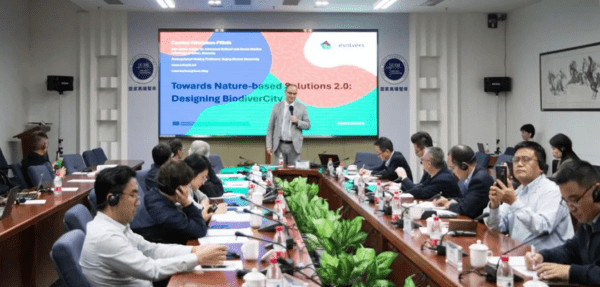
At the symposium, Wanda emphasized the significance of ecological civilization, biodiversity, and green development for China’s modernization, highlighting the need for strong protection measures to drive high-quality development. Zhai Yongping urged focusing on biodiversity loss and changing economic frameworks to balance profit with ecological preservation. He noted Tencent’s philanthropic support for new technologies but emphasized the need for broader collaboration. Huang Duobin shared Shenzhen’s Nature-based Solutions (NbS) experiences, including pollution control, low-carbon development, human-nature harmony, and valuing marine ecological products. Liu Chang highlighted Shenzhen’s proactive climate adaptation efforts, integrating goals into urban planning, developing monitoring systems, and promoting green infrastructure. Wu Wenyuan discussed integrating human life with natural rhythms in urban design and emphasized the need for management changes to implement NbS.
Professor Yuan Yiming discussed the development-ecology relationship, driving mechanisms for ecological progress, and the importance of institutional innovation, praising Shenzhen’s collaborative success. Liu Yu concluded by emphasizing global NbS exploration, proposing integrated climate and biodiversity solutions, and thanking participants for their insights.


